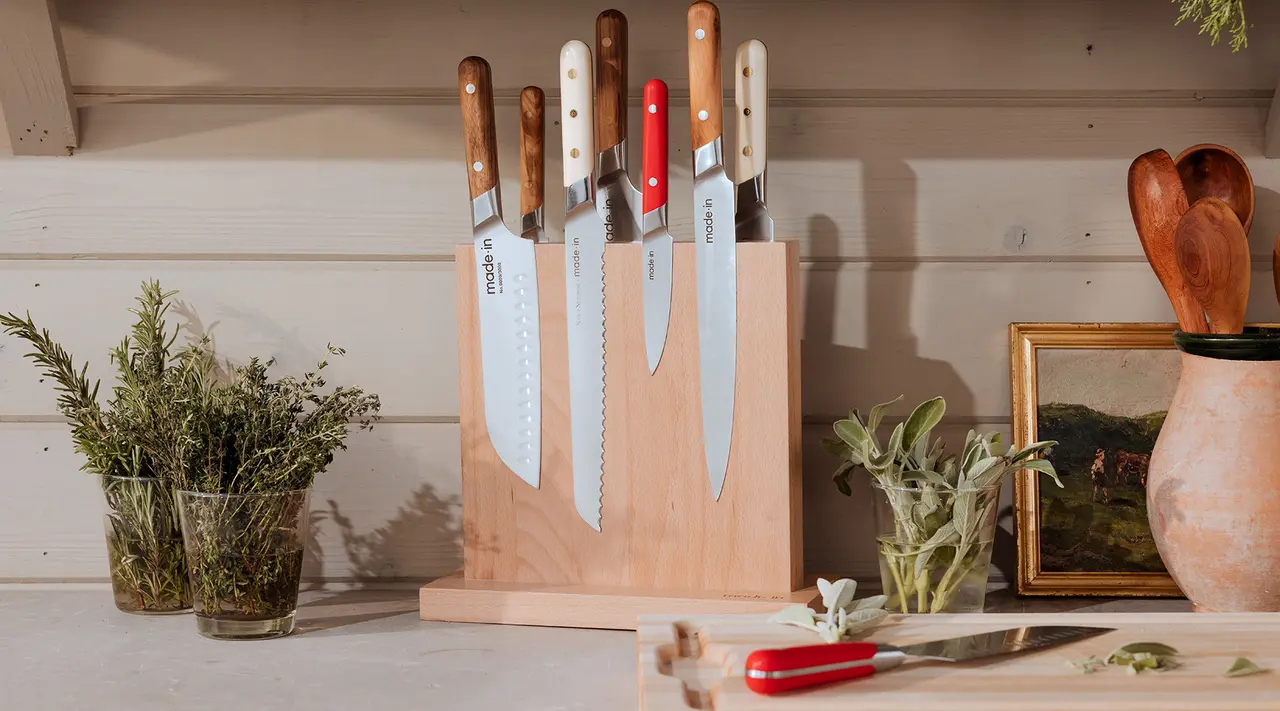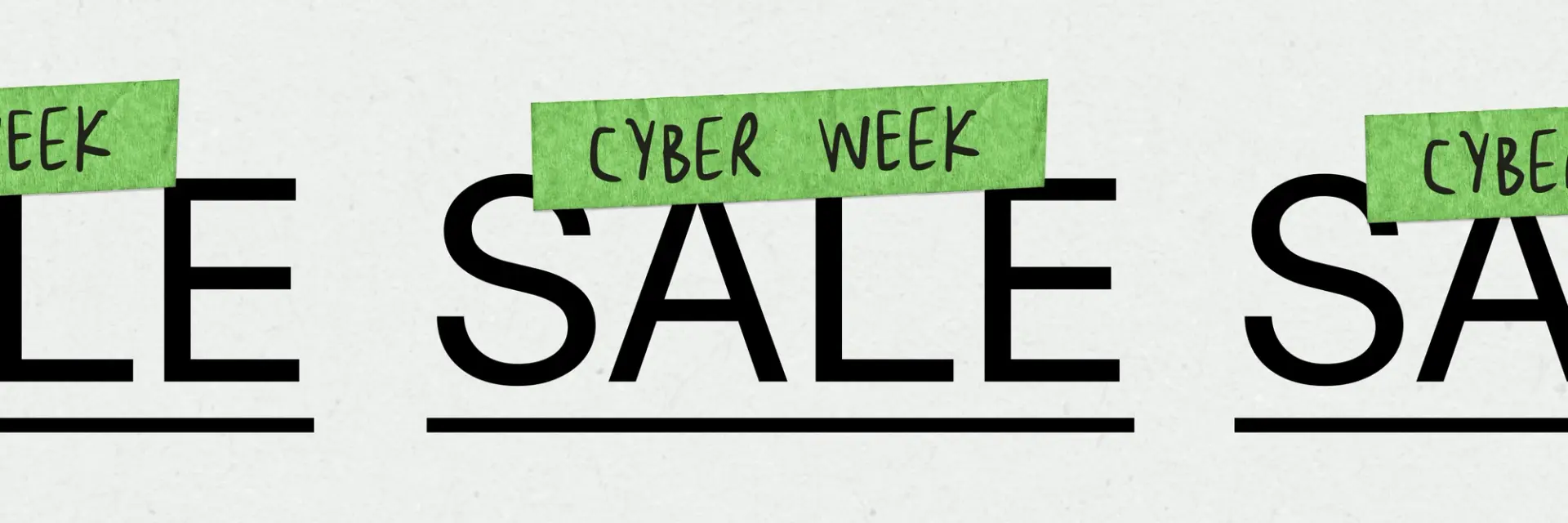As often the first thing to touch your ingredients, knives are an extremely important part of any chef's toolkit. And if you don’t possess some basic knowledge of what a knife can do and what features it has, you’re going to wind up with something that not only can’t do its job, but is much too sharp to be an expensive paperweight.
We've found that it’s best to start simple. Ask yourself: What do I need the knife for? From there, you can determine the size you need and what material you’d like it to be made from.
Whether you’re a knife novice or you’re just interested in learning a little more about knife characteristics, we’ve made knife shopping simple (or as simple as it can be) by providing you with all of the important questions to ask while you’re in the market for a new knife.
What Kind of Knife Do You Need?

Just like you need different pans based on what you’re making, there’s no one knife that is perfect for every task. No matter what shape you're looking for, high-quality indicators include full tang and fully-forged construction—this means the metal of the knife is forged from a single piece of steel (rather than stamped from a sheet of metal) and extends all the way through the handle. The result is a stronger, more balanced blade without any weak spots.
Professional chefs use a wide variety of knives in the kitchen, from cleavers for breaking down cuts of meat to bird's beak knives for coring fruit. While most home chefs will not need quite as many options as a professional, it's wise to have a few different shapes to choose from.
That’s because different knives serve different purposes. For example, if you’re looking for something that can break down a whole bird, a boning or chef’s knife is a great option. If you’re mostly chopping vegetables, the granton edge of a santoku knife helps ensure that thinly sliced pieces don’t get stuck on the blade. Specialized knives usually have their primary function in the name, like a serrated bread knife or set of fishing knives.
When in doubt, you can always go for a set, which will give you a few different options.
What Size Knife Do You Need?
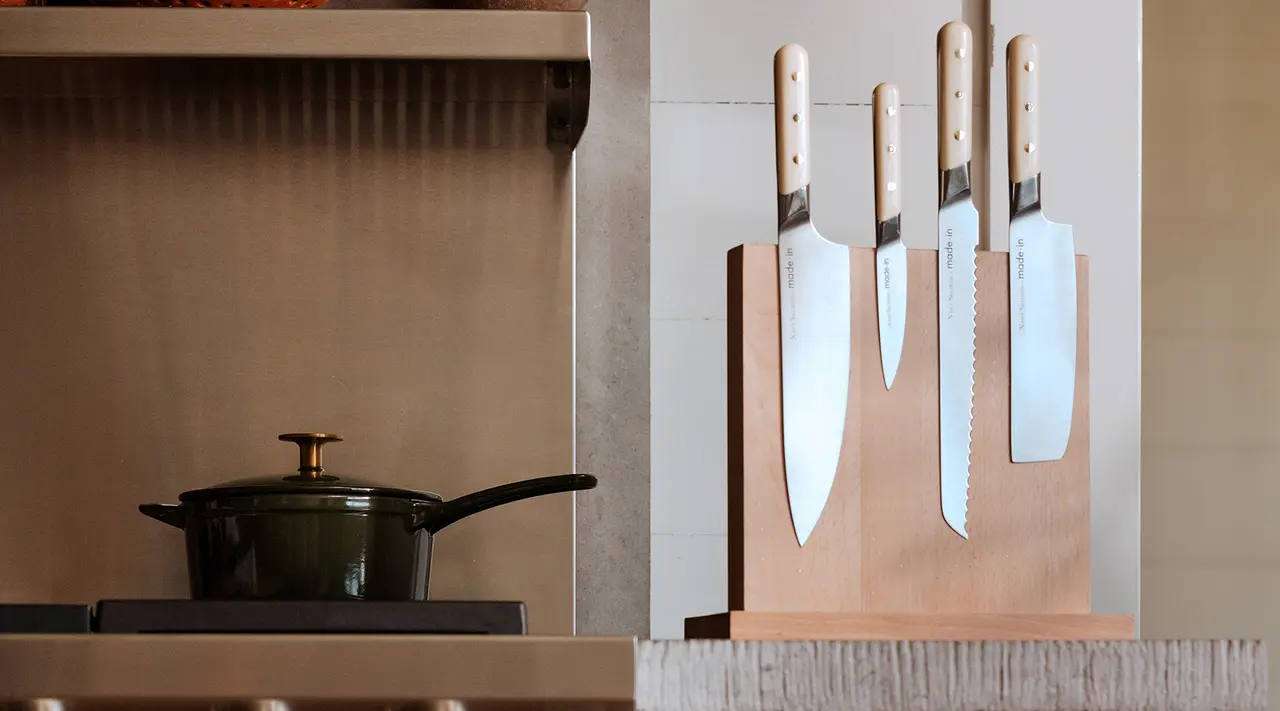
Knife size may just be the most personal part of knife shopping. Figuring out what size you need really comes down to that initial question—what is this knife for? Some knives serve a specific function (like a bread knife), so you already know exactly what it’s for and when to use it.
While there is no “all-purpose” knife, our 8" Chef Knife is the closest thing both professional and home cooks use to do multiple tasks related to meat and vegetables—and luckily, it's available in multiple sizes.
If you prefer something a little smaller, nakiri knives are shorter and may feel more manageable for cutting vegetables. The smaller the knife, the more precise you can get with your cuts, so paring are great for slicing up softer, more delicate ingredients.
What Material Is Best?

When looking for a knife, chances are stainless steel will suit your purposes well. Since stainless steel is an alloy, or a mixture of metals, its quality can vary. Knives advertised as “high carbon” indicate the strength of the blade and that the knife will remain sharp, but they often require more maintenance and need to be buffed to remain in good condition.
Our Knives are treated with nitrogen, which helps maintain the sharpness without specialized care.
Carbon Steel vs. Stainless Steel Knives
There's an ongoing debate between knife enthusiasts about which is a better material for kitchen knives—carbon steel or stainless steel. There are of course, pros and cons to each.
Untreated stainless steel is a softer material than carbon steel, which means it will need to be sharpened more often. However, carbon steel knives are more brittle and therefore need a lighter touch when sharpening. They are also more prone to chipping or denting if you drop them.
Stainless steel stays shiny silver, while carbon steel discolors easily. Stainless is also a nonreactive material, meaning that it is not sensitive to acidic ingredients like tomatoes or citrus. Carbon steel knives must be wiped down immediately after use, as residual food can damage the blade—a recurring theme with carbon steel as a material is that it requires more care than others.
Carbon steel has its advantages and is favored by some, but typically is not ideal for someone new to knives who may not be prepared to put in the extra work.
What Is the Rockwell Hardness Scale, and Why Does it Matter?
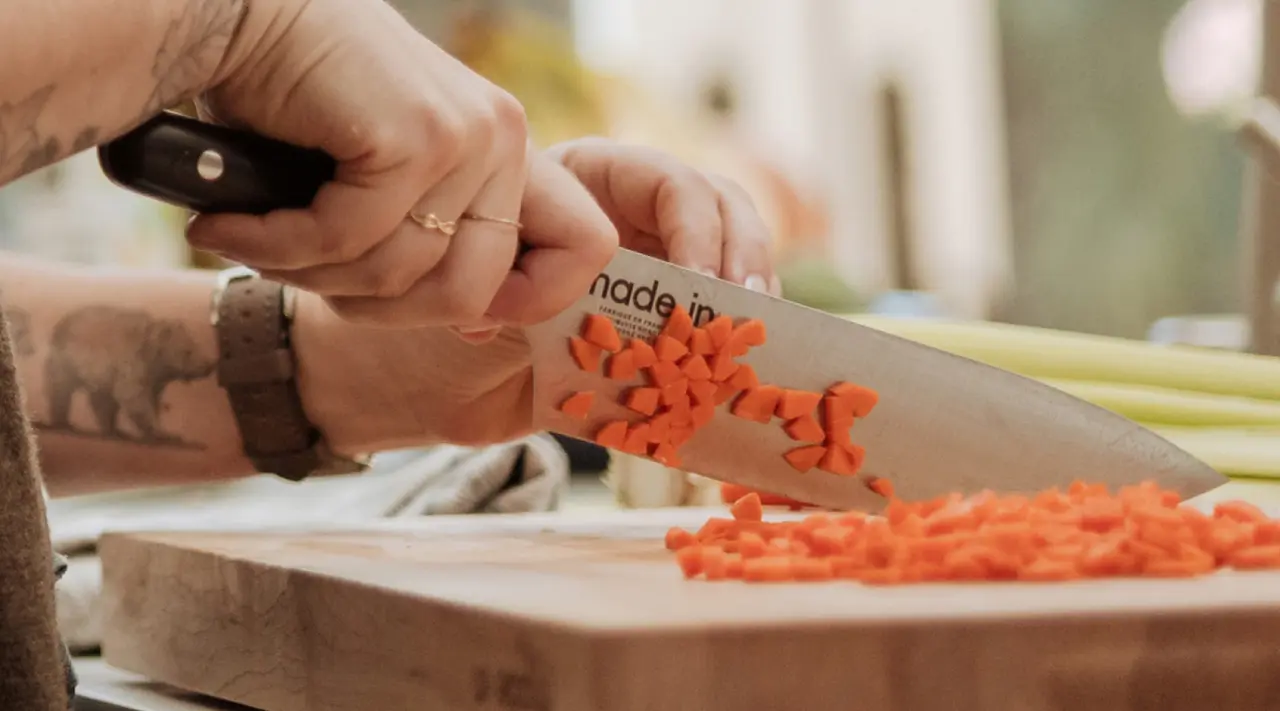
Rockwell hardness is a way to rate the strength of different metals. It refers to how resistant a metal is to damage from another metal. Knife manufacturers use the Rockwell C Scale (RC) to determine the hardness of their blades. The higher the number, the harder the metal. A softer knife will be around RC45, while harder blades are around RC60. Some Carbon Steel blades are as high as RC65.
Higher RC (or harder knives) ratings do not necessarily mean better quality knives. A rating above RC60 can indicate that your knife, while sharp, is susceptible to breakage. Knives with a slightly lower RC are usually better at withstanding impact and are more durable, despite the fact that knives with a higher RC will hold their edge longer.
Our knives average around RC58, indicating that they are strong and sharp, fairly easy to sharpen and hone, but are not in danger of shattering upon impact like some knives with an RC above 60. When looking for a knife, the RC50-RC60 range is ideal.
How Much Should You Pay?
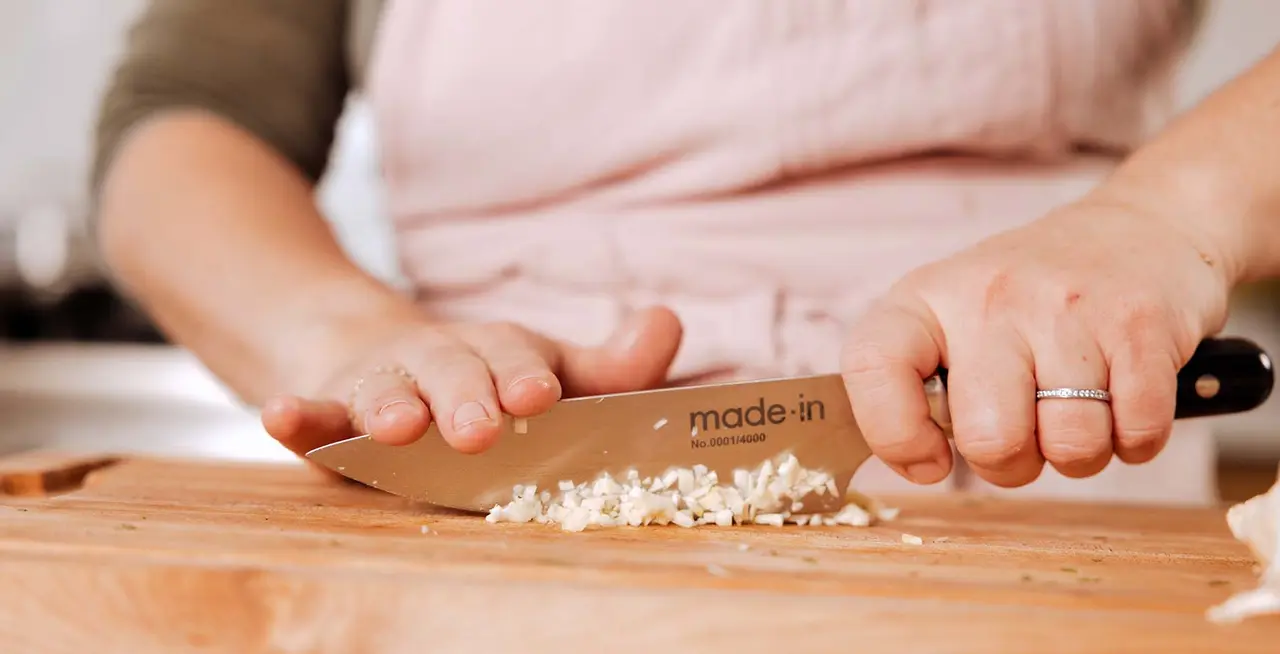
The price of knives ranges depending on a number of factors, including where it's made, the construction materials used (including handle material), and how it's made. A stamped knife made in China with a plastic handle will be less expensive than, say, a full-tang, fully-forged, French-made blade with an Olive Wood handle, but it will also need to be replaced much sooner than a higher-quality one.
All that to say, a knife can range wildly in price—sub $50 to over $1,000. While there's no best price for a knife, ensure it has all the qualities you need it to, feels good in your hand, and fills a necessary
Ready to Chop?
Now that you're armed and ready with more information on what to look for in a knife, the fun part begins—finding the perfect knife. Our full-tang, fully-forged blades are crafted by fifth-generation bladesmiths in Theirs, France—the birthplace of the modern chef knife. They're not only chef-loved, but can handle any task in your kitchen, small or large.
